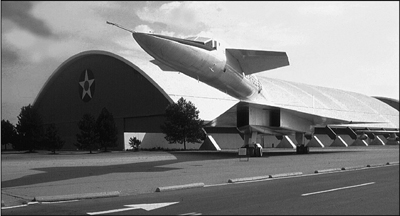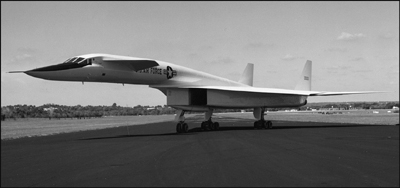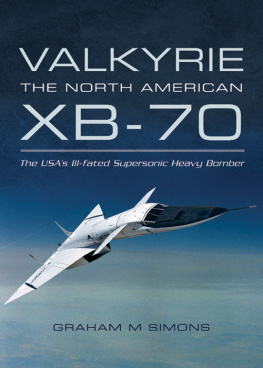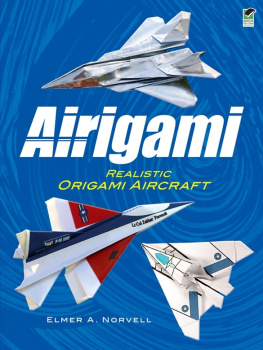A project of this nature could not be undertaken without considerable help from many organizations and individuals. Special thanks must go to Tom Brewer, formerly of the Air Force Museum Foundataion Inc, and later the National Museum of the US Air Force for much help and assistance over the years. Thanks also to the staff of the John F Kennedy Presidential Library, the staff of the Lyndon B Johnson Presidental Library, the staff of the Air Force Historical Studies Office, the staff of the NASA History Office, the History Office of Edwards Air Force Base, North American Aviation, and North American Rockwell.
The author is indebted to many people and organisations for providing photographs for this book, many of which are in the public domain. In some cases it has not been possible to identify the original photographer and so credits are given in the appropriate places to the immediate supplier. If any of the pictures have not been correctly credited, the author apologises.
INTRODUCTION
The first time anyone sees the sole surviving XB-70A Valkyrie its hard not to be struck dumb by the jaw-droppingly amazing shape of this totally futuristic otherworldly looking aircraft.
Firstly, its huge. The aircraft is five times heavier and a whole lot larger than the MiG 25 fox bat or SR-71 Blackbird, the designs nearest rivals. Secondly it looks fast. The first time I saw Air Vehicle One was outside the USAF Museum (as it then was) at Wright Field, near Dayton Ohio, in 1980 -it looked as if it was about to go supersonic just parked there! At the time it was playing one of a pair of bookends outside the main building to a later generation Rockwell B-1 Bone and the Valkyrie still looked the more advanced!
Thirdly, the aircraft was one very big leap-into-the-future design that pushed the envelope in terms of exotic materials used -such as stainless steel honeycomb, very large amounts of titanium, the use of tool steel for structural components and it would have used the chemical high energy zip fuel if that had not been cancelled.
At one stage -if all the plans and rhetoric had come to fruition -there would have been 250 Valkyries in the air -the pinnacle of General Curtis LeMays quest for the ultimate strategic bomber operated by his Strategic Air Command.
It has been said that the beginning of the XB-70 story was the search for a nuclear-powered bomber -that started with a highly modified Consolidated B-36 Peacemaker, the design of which came from World War Two when it looked as if the USA would have to fight a two front war from bases only on the mainland. The B-36 was the first interim bomber, replaced almost as soon as it appeared by the Boeing B-52 Stratofortress, itself the second interim design, albeit jet-powered, but it was still subsonic.

The sole surviving XB-70 was retired to the Air Force Museum in February 1969 and spent many years outside in the harsh Ohio climate. (author)

62-0001 was re-painted in the 1980s, and poses here for the obligatory Museum Portrait. (USAF)
The Convair B-58 Hustler came out of the preliminary studies and was supersonic -but at best it could only be called a medium bomber and was too much, too soon. It became a maintenance nightmare, as any crew chief from the time will tell you.
What General Curtis LeMay wanted was a machine with the speed of the B-58 and the load-carrying capacity of the B-52 -and without doubt the B-70 looked like it would fulfill his needs. What LeMay got was possibly the biggest fight he ever had experienced -with Robert McNamara and his team of Whiz Kids. This small, elite band of civilians, who had mainly moved over from either the RAND Corporation or the Ford Motor Company and went right to the heart of the John F Kennedy and Lyndon B Johnson presidential administrations. The Whiz Kids invented a world where all decisions could be made based on numbers -an ideal that is still skirted on by many MBA programs and consulting firms. They found power and comfort in assigning values to what could be quantified and deliberately ignored everything else.
The B-70 was cut back to two experimental aircraft -with the possibility of a further machine, as a prototype to the Reconnaissance Strike concept. It was also to be used as a test aircraft in the American ego-driven Mach number too far SuperSonic Transport that was doomed to failure.
Of the two built, one was lost -and two highly experienced test pilots were killed -during what politicians called an illegal flight, despite the same type of event happening many times before.
The revealed story is one of ambition, dreams, spying, and dirty pool politics on Capitol Hill so nothing unusual there then!
Cecil the sea-sick sea serphent may have been one of the silliest nicknames ever given to an aircraft, but what an aircraft, what a shape, what a design!
Graham M Simons
Peterborough, England
BACKGROUND
It was the 1950s. Elvis Presley was rocking the world with Hound Dog, The Kings of Rythm featuring a guitarist called Ike Turner had already smoked up a storm with Rocket 88, Senator Joseph McCarthy saw Reds under every bed and Cadillacs had tail fins that grew larger and longer with every model. It was a time of contrasting optimism, paranoia and consumerism and the United States of America was aiming at becoming the worlds only superpower.
Meanwhile, on the drawing boards of North American Aviation (NAA) in Southern California, a new incredible design was taking shape for a Mach 3 strategic bomber the B-70 Valkyrie.
The concept of strategic bombing goes back to Harold Lee George. An American aviation pioneer and an outspoken proponent of the industrial web theory, George taught at the Air Corps Tactical School (ACTS) and through his teachings, influenced a significant group of airmen passing through it ones who were to have powerful influences during and after World War Two. He has been described as the leader of the so-called Bomber Mafia, a group of men who advocated an independent military arm composed of heavy bombers.















